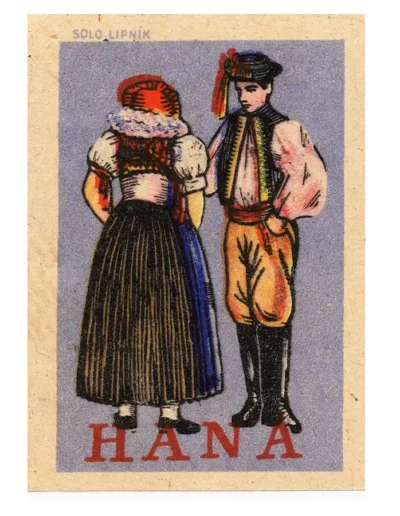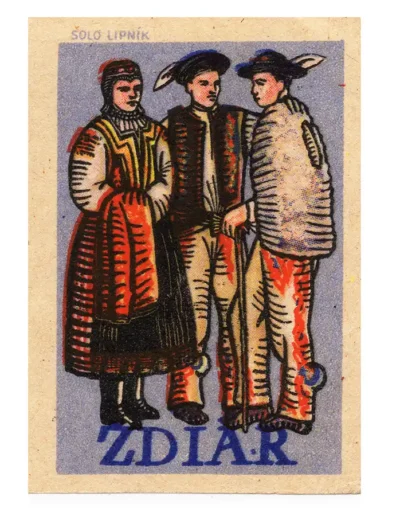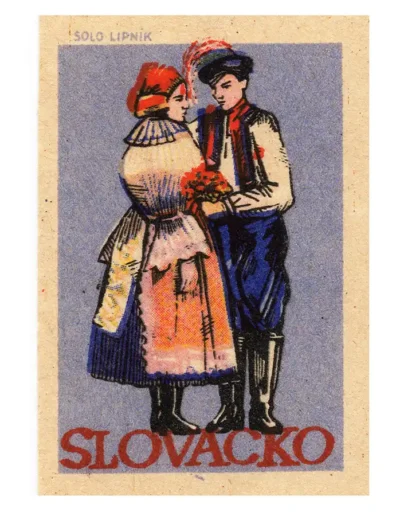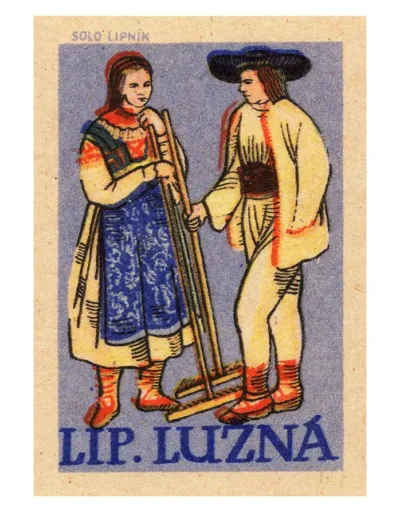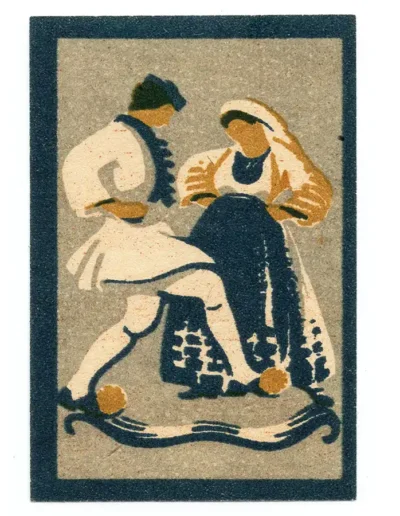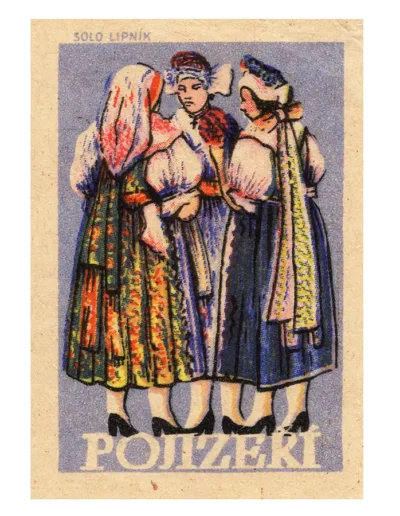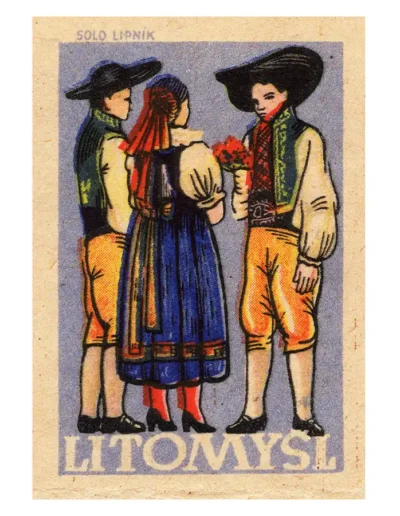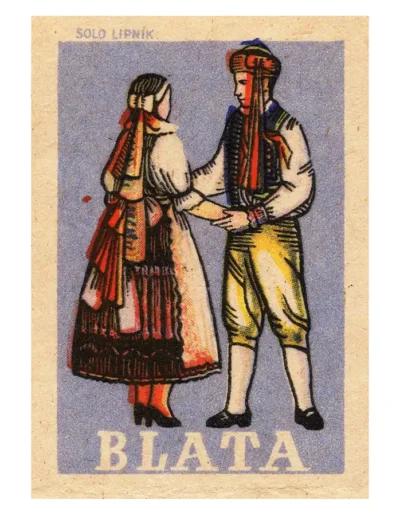Haná (Czech Republic)
The folk costumes from Haná are renowned for their intricate embroidery and vibrant colors. Women’s costumes feature heavily embroidered blouses and aprons over red skirts, while men wear white embroidered shirts with wide belts and baggy trousers. A distinctive feature of the Haná costume is the lavish bonnet for women, known as “kroj,” adorned with lace and ribbons.Detva (Slovakia)
In Detva, folk costumes are known for their rustic simplicity and functionality, reflecting the region’s pastoral life. Women’s dresses are adorned with geometric patterns, especially around the sleeves and hem, while men’s attire includes linen shirts, woolen vests, and wide leather belts. A unique accessory is the “fujara,” a long shepherd’s flute, often carried during traditional festivals.Vinicné (Slovakia)
Vinicné, though small, has a distinct style of folk costume characterized by the use of darker colors and simpler designs. The women’s costumes are notable for their black aprons and headscarves, which contrast with the white blouses, while men’s costumes feature black vests over white shirts, with minimal embroidery.Zdiar (Slovakia)
The folk costumes of Zdiar stand out for their extraordinary use of color and pattern. Women’s costumes include brightly colored skirts and vests, heavily adorned with beads and embroidery. Men wear similarly vibrant vests over white shirts, with wide leather belts. The woolen hats, decorated with colorful ribbons and beads, are particularly distinctive.Čičmany (Slovakia)
Čičmany is famous for its painted wooden houses, and its folk costumes mirror this artistic flair. The costumes feature black and white geometric patterns, similar to the motifs found on the houses. These patterns are most commonly seen on women’s skirts and aprons and men’s vests, creating a striking visual identity for the region.Třeboňská Blata (Czech Republic)
The folk costumes of Třeboňská Blata are characterized by their simplicity and earth tones, reflecting the marshy landscapes of the region. Women wear long, plain skirts with embroidered blouses, while men’s attire is dominated by brown and green colors, with simple hats and boots suited to the wet terrain.Litomyšl (Czech Republic)
Litomyšl’s costumes are elegant and refined, with a focus on detailed embroidery and lacework. Women’s dresses often feature floral patterns, while men’s costumes include tailored vests and jackets. A distinctive feature is the use of silk ribbons and lace, adding a touch of luxury to the traditional attire.Pojizeří (Czech Republic)
In Pojizeří, the folk costumes are influenced by the region’s rich textile history. The costumes feature intricate lacework, especially on women’s headscarves and aprons. Men’s costumes are simpler, with embroidered linen shirts and woolen trousers. The use of blue and white colors is prevalent, reflecting the natural beauty of the region.Chodsko (Czech Republic)
Chodsko’s folk costumes are unique for their use of dark colors and elaborate headgear. Women’s costumes include black skirts and richly embroidered blouses, topped with distinctive hats. Men wear dark vests and trousers, with hats adorned with feathers or fur, reflecting the region’s warrior heritage.Slovácko (Czech Republic)
Slovácko is famed for its elaborate and colorful costumes, with intricate embroidery and beadwork. Women’s attire includes layered skirts and embroidered vests, while men’s costumes feature detailed embroidery on shirts and vests. The feathered hats worn by men are a striking element of the Slovácko costume.Liptovská Lúžna (Slovakia)
The folk costumes of Liptovská Lúžna are known for their practicality and simplicity, with subtle decorative elements. Women wear woolen skirts and aprons with simple blouses, while men’s attire consists of linen shirts and woolen vests. The use of natural colors reflects the region’s connection to the surrounding mountains and forests.Each of these regions brings its own flavor and history to the tapestry of Czech and Slovak cultural heritage through their folk costumes. Whether it’s the intricate embroidery of Haná, the colorful beads of Zdiar, or the geometric patterns of Čičmany, these costumes offer a window into the past and a celebration of the present. They are not just attire but a living tradition that continues to thrive in festivals, weddings, and celebrations across both countries, weaving together the stories of generations and the rich cultural landscape of the Czech and Slovak Republics.
